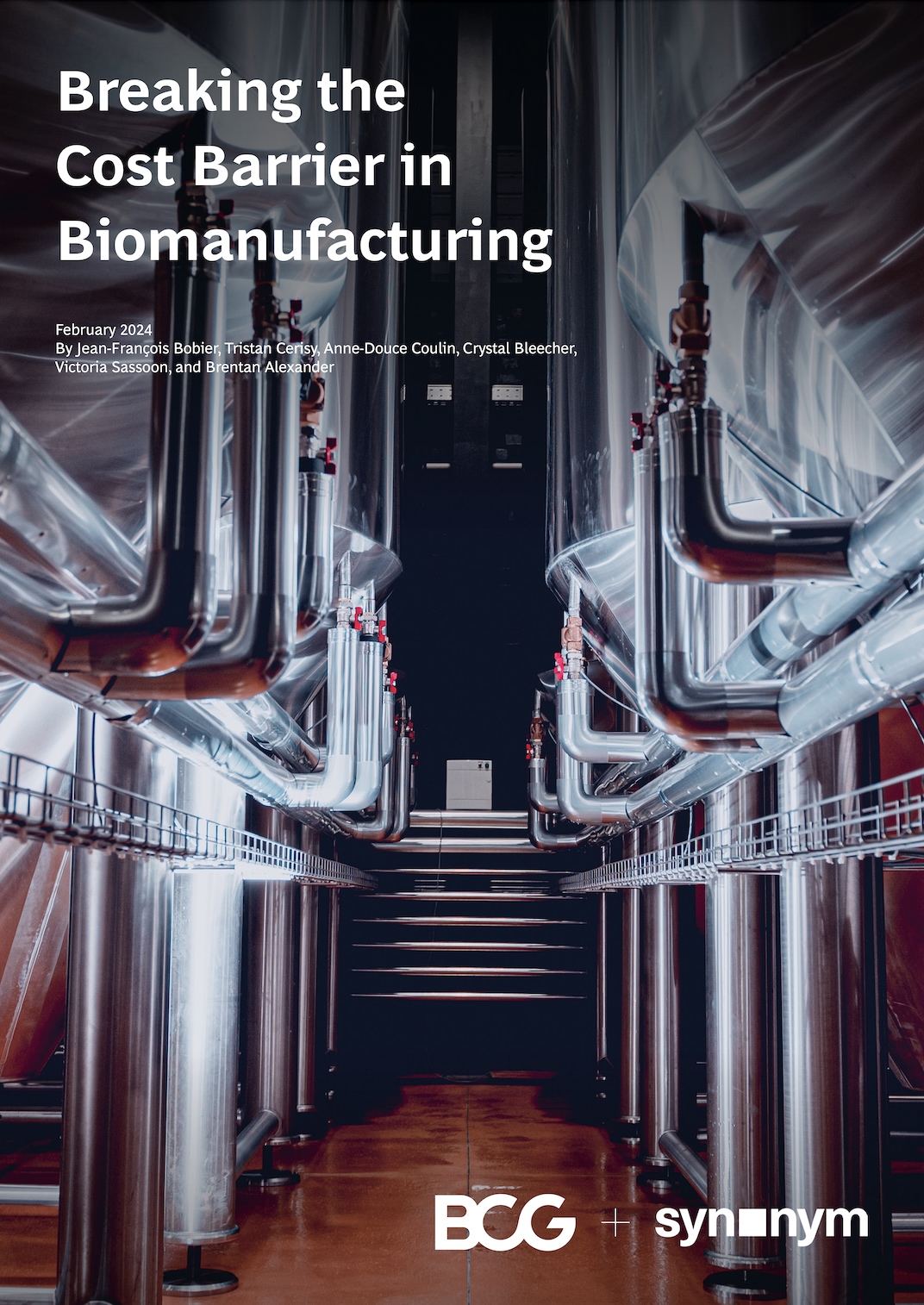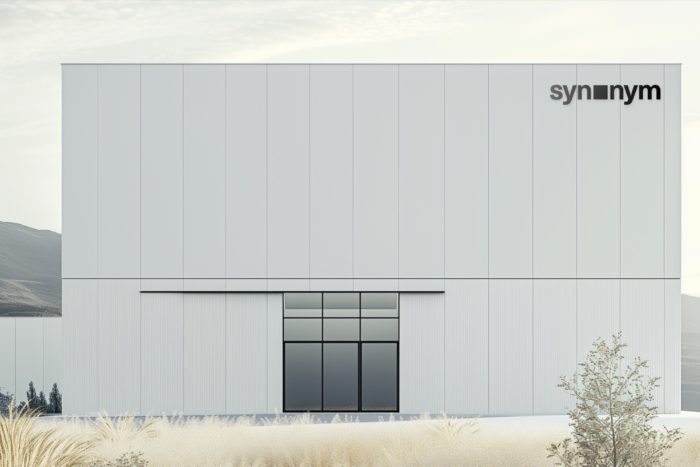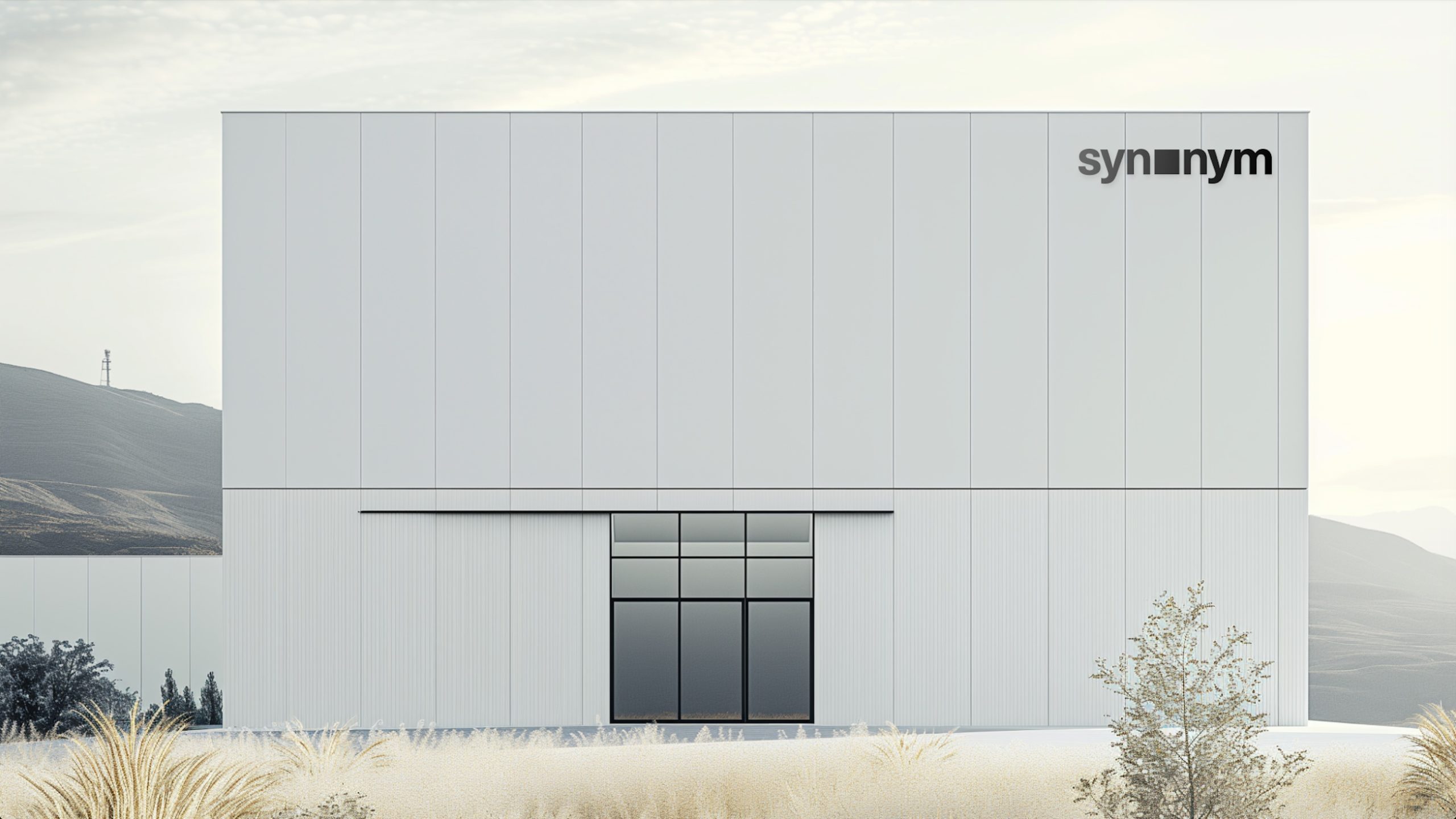
Biomanufacturing uses fermentation, enzymes and microorganisms instead of energy-intensive, synthetic processes to make many of the products used every day: pharmaceuticals, raw materials (plastics, paper and textiles), chemicals to develop soaps and detergents, food fortification, and more. Synonym, a strategic partner for biomanufacturing companies, predicts that it will become a $200 billion market over the next decade. We spoke with Co-Founder Joshua Lachter to learn more about this trajectory and how Synonym supports what they believe to be the “next manufacturing revolution.”
What does Synonym do?
Appreciating what Synonym does begins with understanding what it means. When do you use a synonym? When the thing you have isn’t good enough. Legacy manufacturing processes are the ‘thing’—outdated, unsustainable methods of making the stuff we all need. Synonym believes that products created using biology will represent the next manufacturing revolution: making better stuff in a better way, from food to fabrics—and in so transforming crucial elements of supply chains and helping to catalyze a decarbonized future. When we say biomanufacturing, we are mostly referring to precision fermentation: microbes that consume a feedstock and produce something useful as a result. This is a big transition, and it needs the rails to run on. That’s what Synonym does: we build infrastructure for the bioeconomy. We create the means for this industry to expand and scale seamlessly by working as the strategic biomanufacturing partner for companies building these next-generation bioproducts via fermentation. A lot of these are startups, and it’s tough to find cost-effective ways to build products using the current network of biomanufacturing facilities. We enable the former by creating more of the latter.
Can you explain how your online tools, Capacitor and Scaler, work?
To put it simply, they are a matchmaker and a calculator—but there’s a lot more than that going on behind the input fields! They are, respectively, the biomanufacturing industry’s most dynamic manufacturing database—and a techno-economic modeling tool to help companies on their paths toward reaching commercial scale.
Capacitor is the world’s most comprehensive directory of available contract manufacturing capacity for fermentation. There are currently over 260 facilities listed, representing over 50 million liters of capacity in some 42 countries. Thousands of companies across sectors and countries use Capacitor to find the right scale-up partner. We know that finding this perfect fit can be a long and expensive process, so recently, we’ve also started helping companies find a CMO. Reach out to us if we can help you locate the right scale up partners.
Scaler is a techno-economic analysis (TEA) and life-cycle assessment (LCA) calculator that generates insights designed to help companies optimize their paths to market and their carbon footprints. Essentially, it helps them understand their product’s unit economics, supplying an indication of what scale of product will produce profit. And all in a few seconds. If you’re looking to understand the economic viability of your technology, the Scaler output is a great place to start. If you’re looking to understand a certain trade-off or evaluate something specific to your process, our team of engineering and capital markets experts also build customized TEAs, so let’s chat!
What were the main points made in your most recent report with BCG?
In our report, we laid out the roadmap to the imminent biomanufacturing ‘moment,’ predicting an explosion to a $200 billion market over the next decade.
The key is the creation of multi-function, standardized fermentation facilities (biofoundries) which is what Synonym is committed to enabling. The report states these represent an ‘enormous opportunity for infrastructure investment’ that will de-risk the sector and enable industrial-scale production of superior food, materials, chemicals and more. The barrier is the investment, which is needed to make these facilities a reality: the chicken that will lay the biomanufacturing egg of the future.
Things could scale quickly if this becomes a reality. A single biofoundry would have more capacity than is currently available globally at some 2 million liters each: a visionary roadmap would be 1,000 such facilities worldwide with a combined capacity of 2.4 billion liters. Demand for biomanufacturing is growing so this kind of capacity could truly unlock the market and kick start a biomanufacturing golden age right when the world needs it. Imagine it: better, more durable clothing. Dairy without the farms. Industrial production of miracle materials like spider silk, and bioplastics. Better stuff, made in a better way, using nature—not harming it.

Why is it important to bring biomanufacturing to a larger scale?
It is important to bring manufacturing costs down so that bioproducts can realistically compete with animal-derived and petroleum-based legacy products on shelves. We need to achieve economies of scale to do this—and the only way is by producing in commercial-sized tanks and facilities. So far, biomanufacturing has been a niche industry with facilities built to do one very specialized thing—usually making pharmaceuticals. By designing large facilities that can be put to a number of uses, you’re creating something with the precision of a lab—but the scale of a factory.
How will we be able to drive down biomanufacturing costs without compromising on quality?
Precision biomanufacturing doesn’t work in the same way as standard production. Once the strains are perfected, not much changes in the process besides the size of the tank to achieve economies of scale. Then, like current manufacturing methods, it’s a matter of quality control and standardization to ensure superior product performance.
What are the largest fears or criticisms surrounding precision fermentation?
Everything Synonym’s business model is designed to tackle! The obvious one is cost—and the big criticism of how companies are not currently producing bioproducts with the economics needed to compete in existing markets. The second criticism, which is bolted to this, is scale. Helping companies solve the problem of commercially viable infrastructure will help achieve the scale needed to bring those costs down and make these products a true alternative that doesn’t cost the earth.
How did you come to estimate that scaling up industrial fermentation could create a $200 billion market by 2040?
It’s important to note that many sizing estimates of this market by others have run into the trillions of dollars. We, however, focused exclusively on the market for the bioproducts produced by these new biofoundries—specialty chemicals, food, and chemical precursors—which are most often used as ingredient inputs for most of the products made today. These are the biggest near-term opportunities. Standardized biofoundries can serve all of these markets, with construction focusing on higher-margin, lower-volume molecules first.
What needs to happen in public policy to help move these efforts along?
Public policy will play a major role in the transition to a bio-based economy. To start, government grants, government-backed loans and tax incentives will be crucial to build the first facilities and demonstrate feasibility, and create the environment for growth. Additionally, governments can guarantee offtakes, buying these products for various uses to catalyze the market.
Once the first few facilities are built and large-scale biomanufacturing is more of a growth market, governments need to continue to provide support via bio-friendly regulations and financial support. It’s difficult to understate how critical this is: without government support, as a society we wouldn’t have made some of the biggest strides in innovation, from mobile phones to microchips to the internet. Biomanufacturing is about to have its big moment—it’s the natural evolution for our manufacturing industries, such as we’ve seen throughout history. Synonym is committed to making this happen—but we need others to see the potential here, too.












